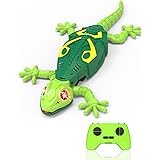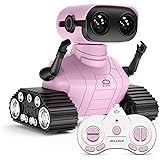Embarking on the journey of building a drone is an incredibly rewarding experience, transforming a collection of components into a sophisticated flying machine. As showcased in the accompanying video, constructing a drone based on the renowned DJI F550 Hexacopter frame kit offers a fantastic entry point into advanced multirotor technology. This comprehensive guide will delve deeper into the intricacies of this particular build, expanding upon the foundational elements introduced in the video and providing additional insights for a successful assembly and flight experience.
Deconstructing the DJI F550 Hexacopter Kit: A Foundation for Flight
The DJI F550 Hexacopter kit serves as an excellent starting point for any enthusiast eager to assemble a robust and capable drone. This particular frame distinguishes itself as a hexacopter, meaning it incorporates six motors rather than the four found on a typical quadcopter. Consequently, this design provides enhanced stability, greater lifting capacity, and increased redundancy, which can be invaluable during flight operations.
Within the kit, builders will discover the primary frame components, alongside six powerful motors, eight durable propellers, and six Electronic Speed Controllers (ESCs). The additional two propellers are generally included as spares, anticipating any minor mishaps that might occur during initial flights or calibration. Each ESC is critically responsible for regulating the speed of its corresponding motor, translating commands from the flight controller into precise power delivery. Imagine if one motor were to fail mid-flight; a hexacopter often possesses the capability to maintain controlled flight and land safely, a distinct advantage over its quadcopter counterparts.
The Heart of the Drone: Understanding the NAZA-M Lite Flight Controller
Central to the intelligence and stability of the DJI F550 Hexacopter is the NAZA-M Lite flight controller, a highly respected and user-friendly system. This sophisticated component acts as the drone’s brain, interpreting pilot commands from the remote control and executing precise adjustments to the motor speeds. Furthermore, the NAZA-M Lite flight controller typically includes an integrated GPS module. This GPS functionality is absolutely crucial for enabling advanced features such as position hold, which allows the drone to automatically maintain its current location, and ‘Return to Home,’ a vital safety feature that autonomously guides the drone back to its takeoff point. Calibrating the compass and GPS module meticulously during setup is paramount for ensuring accurate and reliable performance.
Moreover, the NAZA-M Lite is renowned for its straightforward setup process and robust performance, making it an excellent choice for intermediate builders. It strikes an impressive balance between advanced capabilities and ease of use, preventing new builders from becoming overwhelmed. The system efficiently manages various flight parameters, ensuring smooth and predictable maneuvers even in challenging conditions. Builders are advised to thoroughly review the NAZA-M Lite manual to fully understand its capabilities and proper configuration procedures, maximizing the potential of their DJI F550 Hexacopter.
Essential Components Beyond the Kit for a Complete Drone Build
While the DJI F550 Hexacopter frame kit provides the core structure and propulsion, several critical components must be acquired separately to bring the drone to life. These supplementary parts are instrumental in providing power, control, and operational versatility.
First among these is the XT60 connector, a standard component for power delivery in many RC applications. This connector facilitates the secure and efficient connection of the battery to the drone’s power distribution board. A reliable power source is imperative for sustained flight, and the correct battery selection is paramount. Builders typically opt for Lithium Polymer (LiPo) batteries, chosen for their high power-to-weight ratio. The battery’s voltage (e.g., 3S, 4S) and capacity (mAh) directly impact flight time and motor performance. Additionally, a small adapter is often necessary to ensure the battery can properly plug into the XT60 connector, ensuring compatibility and a safe electrical connection.
Furthermore, a robust controller paired with its corresponding receiver is absolutely essential for piloting the DJI F550 Hexacopter. The receiver, mounted securely on the drone, wirelessly translates signals from the handheld controller into commands understood by the flight controller. Choosing a reputable radio system ensures a stable and responsive link between pilot and drone, which is critical for safe operation. Many controllers offer various channels, allowing for the control of not only flight maneuvers but also auxiliary functions like camera gimbals or landing gear deployment. Imagine attempting to fly a drone without a reliable communication link; the potential for loss of control would be immediate and severe.
Elevating Your Aerial Perspective: Camera Gimbals and Landing Gear
For those aspiring to capture stunning aerial photography or videography, integrating a camera gimbal significantly enhances the capabilities of the DJI F550 Hexacopter. The video briefly mentions a basic one-axis camera gimbal, which typically stabilizes the camera along one axis (often tilt). However, more advanced two-axis or three-axis gimbals provide superior stabilization, isolating the camera from the drone’s movements and vibrations. This results in incredibly smooth and professional-looking footage, even when the drone is performing dynamic maneuvers.
Moreover, custom landing gear, also noted in the transcript, offers several practical advantages. Taller landing gear, for example, provides crucial clearance for the camera gimbal and attached camera, protecting them from impact with the ground during landings. It also allows for taking off and landing on slightly uneven surfaces without damaging delicate components. While the F550 kit often includes basic landing skids, upgrading to custom, more robust, or even retractable landing gear can significantly improve the drone’s versatility and resilience. Imagine capturing breathtaking vistas without the worry of a hard landing damaging your expensive camera equipment.
Mastering the Assembly Process: Tools and Techniques for Success
Successful drone assembly necessitates not only the right components but also the appropriate tools and a methodical approach. The video highlights several essential tools that are fundamental for constructing the DJI F550 Hexacopter, each playing a crucial role in ensuring a structurally sound and electrically reliable build.
Firstly, a Hex 2 screwdriver is indispensable for fastening the numerous screws that secure the frame arms, motors, and other components. Using the correct size screwdriver prevents stripping screw heads, which can be a significant headache during assembly or future maintenance. Furthermore, soldering skills are paramount for connecting the ESCs to the power distribution board and attaching the XT60 connector. Any kind of soldering iron capable of reaching adequate temperatures, along with quality solder and flux, will be required. Flux is particularly useful as it cleans the metal surfaces, allowing the solder to flow smoothly and create strong electrical connections. Poor soldering can lead to intermittent power issues or even critical component failure mid-flight, underscoring the importance of neat and secure solder joints. Imagine the frustration of an intermittent connection causing a power loss during an important flight.
Finally, electrical tape serves as a simple yet effective tool for insulating exposed wires, securing components, and tidying up cable management within the frame. Proper cable routing is not merely an aesthetic concern; it prevents wires from interfering with propellers, reduces electromagnetic interference, and makes future troubleshooting significantly easier. Taking the time to manage cables neatly also contributes to the overall robustness and longevity of the DJI F550 Hexacopter. Paying close attention to detail during the assembly process will undoubtedly lead to a more reliable and enjoyable flying experience.
Post-Build Considerations and First Flights
Once the DJI F550 Hexacopter is physically assembled, the journey is far from over; post-build considerations are critical for safe and successful operation. Before the inaugural flight, it is absolutely essential to perform a series of thorough checks and calibrations. These steps ensure that all systems are functioning correctly and that the drone will respond predictably to pilot commands.
Firstly, the NAZA-M Lite flight controller requires meticulous calibration of its sensors, including the compass, accelerometer, and IMU (Inertial Measurement Unit). Incorrect calibration can lead to unstable flight characteristics, or even uncontrolled behavior, posing a significant safety risk. Consequently, following the manufacturer’s instructions for these calibrations precisely is non-negotiable. Furthermore, a comprehensive visual inspection of the entire drone is necessary. Check that all screws are tightened, wires are securely connected and properly insulated, and propellers are correctly mounted and tightened. Imagine overlooking a loose propeller that detaches mid-air; the consequences could be severe for both the drone and nearby surroundings.
After all checks are complete, conduct initial flights in an open, safe area, free from obstacles and people. Begin with short, low-altitude hovers to assess stability and responsiveness. Gradually increase flight duration and complexity as confidence grows and the drone’s performance is validated. Understanding the drone’s limitations and practicing emergency procedures, such as the ‘Return to Home’ function, are also crucial. This careful approach ensures a rewarding and safe experience with your newly built DJI F550 Hexacopter.











